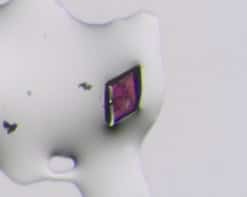
The electrical properties of a carbon fibre are very different when measured across its width or along its length, according to a new study by Satoshi Matsuo and Nancy Sottos at the University of Illinois at Urbana-Champaign in the US. Using a technique designed to probe the electrical resistivity of 2D materials, the duo has shown for the first time that fibres are significantly less conductive in the transverse direction.
When carbon fibres are woven into interlocking sheets, the composite materials they produce can display a unique variety of electrical properties, with applications including electromagnetic shielding; sensing for structural damage in buildings; and protection against lightning strikes. To tailor these composites for specific uses, it is important to have accurate models of their electrical behaviours. However, the complex structure of these materials makes this extremely challenging.
Carbon fibres measure just a few microns in diameter and comprise bundles of smaller carbon filaments, which are themselves composed of crumpled sheets of carbon atoms. Within these sheets, strong covalent bonds between the atoms are aligned parallel to the axis of the fibre. On longer length scales, filaments are bonded together by far weaker van der Waal’s forces.
Difficult to characterize
Such hierarchical structures are very difficult to characterize reliably so Matsuo and Sottos turned to the “van der Pauw” method. This technique is commonly used to measure the resistivities of 2D materials and involves placing two separate pairs of electrodes around the perimeter of a sample. In their experiment, the duo connected the electrodes to 2D slices of carbon fibre, which they cut using a focused ion beam.
Across the diameter of the fibre, the duo measured an electrical resistivity roughly six times greater than that along its length. This means that the material is a poorer electrical conductor in the transverse direction than it is in the longitudinal direction – something that can have important implications for how electrical currents move through a carbon fibre component.

Multifunctional carbon fibres enable massless energy storage
Their results are a step forward in efforts to better understand the electrical properties of carbon fibres – but researchers still have much to learn about the characteristics of far more complex composite materials.
Matsuo and Sottos are now making further progress towards this goal, by measuring the electrical contact resistance between two separate carbon fibres. This value is directly connected with the transverse resistivities of the fibres; as well as the area of contact between them, and the angle at which they cross each other. In the future, the researchers also hope to assess how electrical properties vary under different environmental conditions, such as temperature. In addition, they hope to carry out similar experiments on fibres made from other conductive materials, such as polymers or metals.
The research is described in Journal of Applied Physics.



